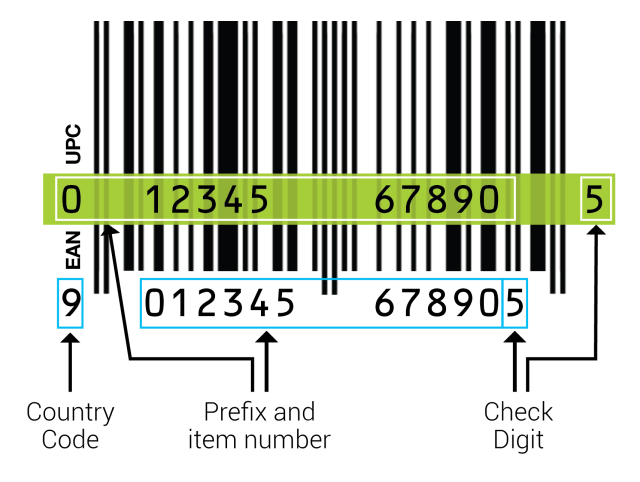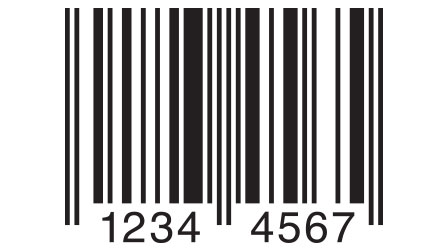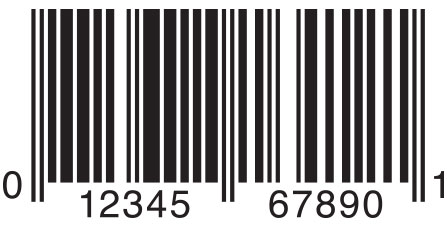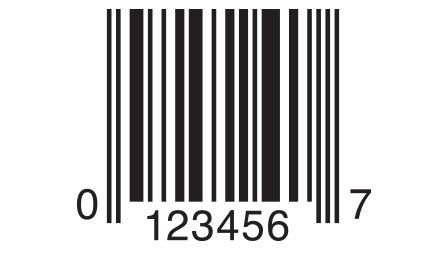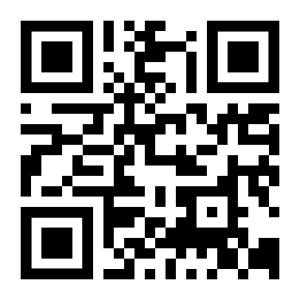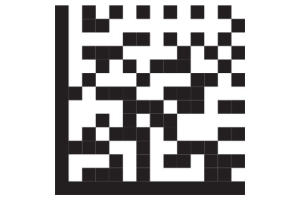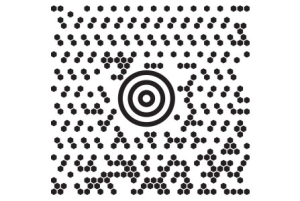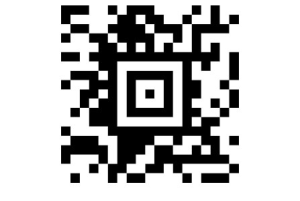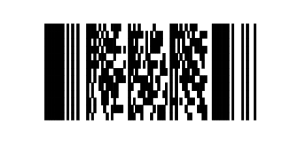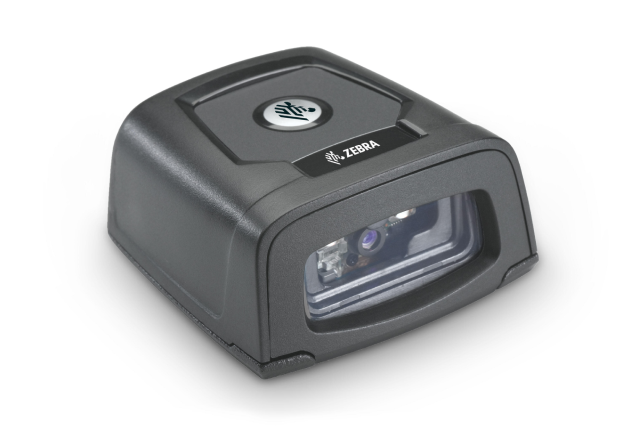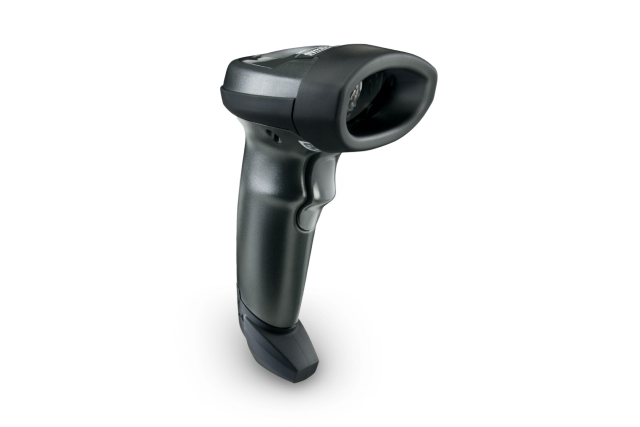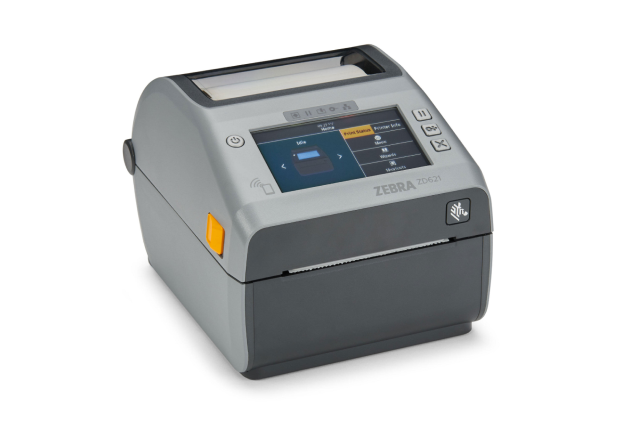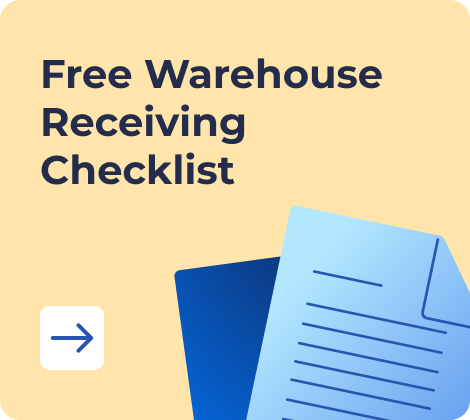Barcode errors can cost you money, time, and trust — especially if you’re running a growing small business. Whether it’s a mislabelled product, lost stock, or fulfillment delays, poor inventory tracking often leads to avoidable chaos. A barcode inventory system helps you avoid these issues by digitizing stock tracking and automating data capture with high accuracy.
At its core, a barcode inventory system is software that connects barcode scanning with your stock records, allowing you to manage inventory across products, variants, and warehouses in real time. This is especially valuable for small and medium-sized businesses (SMEs), where every missed sale or shipment counts — and where speed, accuracy, and control can be the difference between scaling and stalling.
In this updated 2025 guide, we review 12 of the best barcode inventory systems designed for SMEs — including tools that combine barcode scanning with order, warehouse, and production management. You’ll also find practical tips on implementation, pricing insights, and a free trial option to test one of the leading solutions for your business.
Ready to upgrade your inventory process? Let’s explore the smartest barcode tools built for growing teams.
- What Is a Barcode Inventory System?
- Benefits of Using Barcode Inventory Software
- Key Features to Look for in Barcode Inventory Software
- Top 12 Barcode Inventory Software in 2025
- How to Choose the Right Barcode Inventory System for Your Business
- How to Implement a Barcode Inventory System in Your Business
- A Brief History of Barcoding
- Frequently Asked Questions on Barcode Inventory Systems
🧾 Free Checklist for Smooth Warehouse Receiving
📩 Submit the form to download the checklist + get a promo code for a 30‑day trial of Kladana (instead of the standard 14).
What Is a Barcode Inventory System?
A barcode inventory system is a tool that combines barcodes, scanners, and inventory management software to automate how you track products. It replaces manual stock handling with fast, accurate barcode scanning — allowing businesses to monitor product quantity, location, pricing, and variants in real time.
The system typically includes 1D or 2D barcodes, barcode scanners (or mobile apps), and software that integrates this data into your inventory records. This level of automation significantly reduces human error and improves efficiency in everyday operations.
Barcode inventory systems are widely used in manufacturing, warehousing, shipping, receiving, inventory counts, and even asset tracking — helping small and medium-sized businesses gain better control over stock with minimal effort.
Main Components of a Barcode Inventory System
| Component | What It Does |
1. Barcodes (1D/2D) |
Encodes product data (SKU, batch number, variant) in a machine-readable format. |
2. Barcode Scanners 
|
Captures the barcode data; can be handheld, wireless, or built into mobile apps. |
3. Inventory Software |
Processes scanned data, updates stock levels, tracks movements across warehouses. |
4. Labels & Printers |
Used to generate barcode labels for products, boxes, shelves, or pallets. |
5. System Integration |
Links barcode data to your sales, purchasing, or production workflows in real time. |
What is a Barcode?
A barcode is a machine-readable code made of lines, spaces, digits, or shapes (in QR codes) that stores data about a product, packaging, document, or location — such as price, size, weight, or variant. It acts as a digital ID for tracking and inventory purposes.
Barcodes can be scanned using hardware devices or mobile apps, and are generated through platforms like Kladana’s barcode inventory system or other inventory management software with barcode scanner integration.
How does a Barcode work?
Barcodes encode data in a format that scanners or apps can instantly read. This triggers real-time access to product info — ideal for inventory tracking, receiving, stock counts, and shipping. In short, barcodes power automation in any inventory barcode system, helping businesses reduce errors and improve accuracy.
UPC vs SKU — What’s the Difference?
- UPC (Universal Product Code): Used for external transactions like retail and supplier relations. Managed by GS1 and required for selling in most marketplaces.
- SKU (Stock Keeping Unit): Internal code created by businesses to manage warehouse storage, transfers, or product variants. Can be generated manually or via barcode inventory software.
1D vs 2D Barcodes — Explained
Typically, 1D barcodes are used for storing data on items, and 2D barcodes are commonly utilized on packaging and documents.
1D Barcodes
Used to store basic product data (e.g. EAN-13, UPC-A, Code-128). Common in retail and warehouse operations.
| Barcode | Description | Sample |
EAN‑13 |
13-digit barcode widely used in retail and at POS systems. |
|
EAN‑8 |
8-digit version of EAN-13 for small products like candy and gum. |
|
Code‑128 |
Versatile barcode used in warehouse operations; supports letters, numbers, and control characters. |
|
Code-39 |
Common in automotive and pharmaceutical industries. Supports up to 43 characters. |
|
Code‑93 |
A more compact and secure alternative to Code-39. |
|
UPC‑A |
12-digit barcode used in U.S./Canada retail; identifies product, manufacturer, and item type. |
|
UPC‑E |
6-digit compressed version of UPC-A, used for small items. |
|
Samples are provided by Matthews Australasia, Cognex, Accusoft, and ActiveBarcode.
2D Barcodes
Used on packaging, documents, or products to store more complex data — including links, IDs, or media files (e.g. QR Code, Data Matrix, PDF417). Ideal for advanced barcode inventory systems and traceability.
| Code | Description | Sample |
QR Code |
Opens websites, apps, or menus. Scannable by smartphones. Holds up to 7,000 characters. |
|
Data Matrix |
Used for small items in electronics, pharma, and food packaging. Holds up to 2,300 characters. |
|
MaxiCode |
Designed for shipping and logistics. Holds up to 90 characters. |
|
Aztec |
Common in airline tickets and healthcare. Named after its pyramid-like design. Holds up to 3,800 characters. |
|
PDF417 |
Used in transport, manufacturing, and ID docs. Stores up to 800 characters. |
|
Samples are provided by Matthews Australasia, Cognex, and Softmatic.
🚚 Get the Checklist That Keeps Receiving On Track
Keep things running smoothly from the moment goods arrive. Submit the form to download our free warehouse receiving checklist and receive a 30‑day free trial code for Kladana — no credit card required.
What Components Make Up a Barcode Inventory System?
A modern barcode inventory system combines software tools (like barcode generators and inventory platforms) with hardware (scanners and label printers) to streamline stock tracking and reduce errors.
Software Components
- Barcode Generator
Built-in tools generate barcodes automatically for all your SKUs — faster and more reliable than Excel or free online tools.
- Mobile Barcode Scanner App
Allows barcode scanning via smartphone or tablet. Best for light use, though accuracy may vary compared to hardware scanners.
- Label Templates
Customizable templates let you design and print barcode labels with your product data. Software offers more flexibility than free tools.
- Serial Number Tracker
Assigns and tracks unique serial numbers alongside barcodes — useful for warranty, compliance, or high-value items.
- Inventory Management Software with Barcode Scanner Support
The core of the system: tracks stock levels, movement, and orders in real time using barcode scans.
Hardware Components
Stationary Scanner Fixed scanners typically used at checkout counters or packing stations. |
|
Handheld Scanner (Wired/Wireless) Ideal for warehouse teams during receiving, picking, and stock-taking. Wireless scanners offer mobility but need charging. |
|
Thermal Label Printer & Paper Prints barcode labels, price tags, and product stickers on-demand with thermal paper — no ink required. |
|
Pictures are provided by Zebra.
Benefits of Using Barcode Inventory Software
| Key Benefits | Possible Drawbacks |
✅ Accurate Inventory Every item gets a unique ID — no more messy Excel files or handwritten stock notes. |
❌ Setup Time Initial implementation takes effort — from choosing the right barcode inventory software to training your team. But it’s a one-time setup with long-term benefits. |
✅ Fewer Human Errors Scanning barcodes eliminates mistakes from manual data entry, reducing issues with sales, production, and fulfillment. |
❌ Upfront Costs Most inventory barcode systems cost between $7–$100/month, plus hardware like scanners and thermal printers. |
✅ Time Savings Automated tracking speeds up inventory counts, freeing your team to focus on more strategic tasks. |
❌ Equipment Maintenance Scanners and printers require upkeep. Occasional software glitches or updates may also require support. |
✅ Real-Time Stock Visibility Get instant updates on stock levels, locations, and movement — crucial for making fast, informed decisions. |
|
✅ Loss Prevention Proper tracking reduces stock discrepancies caused by misplacement, theft, or miscounts. |
Key Features to Look for in Barcode Inventory Software
Choosing the right barcode inventory system means knowing which features will actually streamline your operations — especially for growing SMEs. Here’s what to look for:
- Barcode Generation & Scanner Compatibility
The software should support both 1D and 2D barcode formats and allow you to create barcodes automatically. Make sure it works with handheld scanners and mobile apps.
- Custom Label Editor
Add fields like color, size, logo, or SKU codes using a built-in label editor — essential for retail and apparel businesses.
- Batch Tracking & Serial Numbers
Ensure accurate traceability across batches or individual items, especially in manufacturing, wholesale, or B2B workflows.
- Data Import from Excel
Quick upload of your existing item database helps speed up onboarding — look for easy bulk import tools.
- Multi-User Access with Permissions
Your inventory barcode system should support multiple team members with role-based access, so you can control who sees or edits what.
- Cloud-Based Software
Store everything securely in the cloud — access your inventory from any device, anywhere, without the risk of losing local files.
- Mobile Access
Use smartphones or tablets as barcode scanners for on-the-go inventory checks, receiving, and audits.
- Integrations with Sales Channels
Sync with platforms like Shopify, WooCommerce, or your ERP to manage inventory seamlessly across channels.
Looking for a Barcode Inventory System Built for Manufacturers and Wholesalers?
With Kladana’s barcode inventory software, you can import, generate, and autogenerate GTIN, EAN-13, EAN-8, Code-128, and UPC barcodes. Scan products, design custom thermal labels, and print them with ease.
All this comes integrated with powerful inventory, warehouse, and production management tools — starting at just $60/month. Built for growing businesses that need control without complexity.
Top 12 Barcode Inventory Software in 2025
| Software Name | Pricing (Year) | Score | Trial Period | Best for | Free Support | Supports | Types of Barcodes | Deployment | ||||||||||||||
| Generation | Autogeneration | Import | Print Forms | Label Editor | Bundles & Batches | Scanning | Assets Tracking | EAN‑13 | EAN‑8 | Code‑128 | GTIN | UPC | QR Code | Cloud | Desktop | Mobile | ||||||
| Kladana | $60–748 |
⭐⭐⭐⭐⭐ (5.0) |
14 Days |
Small to Medium |
✅ |
✅ |
✅ |
✅ |
✅ |
✅ |
✅ |
✅ |
❌ |
✅ |
✅ |
✅ |
✅ |
✅ |
❌ |
✅ |
❌ |
❌ |
| Zoho | $708–2,988 |
⭐⭐⭐⭐ (4.5) |
14 Days |
Small to Medium |
✅ |
✅ |
❌ |
✅ |
✅ |
✅ |
✅ |
✅ |
❌ |
✅ |
✅ |
✅ |
✅ |
✅ |
✅ |
✅ |
❌ |
✅ |
| Deskera | $11,940–14,940+ |
⭐⭐⭐⭐ (4.5) |
14 Days |
Manufacturing & Distribution SMEs |
✅ |
✅ |
✅ |
✅ |
✅ |
✅ |
✅ |
✅ |
✅ |
✅ |
✅ |
✅ |
✅ |
✅ |
✅ |
✅ |
❌ |
✅ |
| Katana | $4,308–21,588+ |
⭐⭐⭐⭐ (4.5) |
14 Days |
SMEs |
✅ |
✅ |
✅ |
✅ |
✅ |
✅ |
✅ |
✅ |
❌ |
✅ |
✅ |
✅ |
✅ |
✅ |
❌ |
✅ |
❌ |
❌ |
| inFlow | $1,788–11,988 |
⭐⭐⭐⭐ (4.5) |
14 Days |
SMEs, Wholesale & Distribution |
✅ |
✅ |
✅ |
✅ |
✅ |
✅ |
✅ |
✅ |
✅ |
✅ |
✅ |
✅ |
✅ |
✅ |
✅ |
✅ |
✅ |
✅ |
| Sortly | $288–1,788+ |
⭐⭐⭐⭐ (4.4) |
14 Days |
Small Business, Retail |
✅ |
✅ |
✅ |
✅ |
✅ |
✅ |
✅ |
✅ |
✅ |
✅ |
✅ |
✅ |
✅ |
✅ |
✅ |
✅ |
❌ |
✅ |
| EZOffice | $420–15,600+ |
⭐⭐⭐⭐ (4.4) |
15 Days |
Equipment, Small Businesses |
✅ |
✅ |
✅ |
✅ |
✅ |
✅ |
✅ |
✅ |
✅ |
✅ |
✅ |
✅ |
✅ |
✅ |
✅ |
✅ |
❌ |
✅ |
| Mintsoft | $2,540–5,987+ |
⭐⭐⭐⭐ (4.4) |
No |
All business types |
✅ |
✅ |
✅ |
✅ |
✅ |
✅ |
✅ |
✅ |
✅ |
✅ |
✅ |
✅ |
✅ |
✅ |
✅ |
✅ |
❌ |
✅ |
| TranZact | $705–4,227 |
⭐⭐⭐⭐ (4.3) |
7 Days |
Manufacturing SMEs |
✅ |
✅ |
✅ |
✅ |
✅ |
✅ |
✅ |
✅ |
❌ |
✅ |
✅ |
✅ |
✅ |
✅ |
❌ |
✅ |
❌ |
❌ |
| HandiFox | $468–1,308 |
⭐⭐⭐⭐ (4.3) |
14 Days |
From Small to Large |
✅ |
✅ |
✅ |
✅ |
✅ |
✅ |
✅ |
✅ |
✅ |
✅ |
✅ |
✅ |
✅ |
✅ |
✅ |
✅ |
✅ |
✅ |
| Vyapar | $80–120 |
⭐⭐⭐⭐ (4.2) |
7 Days |
Small Business, Retail (India) |
✅ |
✅ |
✅ |
✅ |
✅ |
✅ |
✅ |
✅ |
✅ |
✅ |
✅ |
✅ |
✅ |
✅ |
✅ |
✅ |
✅ |
✅ |
| Salesbinder | $108–3,588 |
⭐⭐⭐⭐ (4.2) |
30 Days |
Small Business, Wholesale |
✅ |
✅ |
❌ |
✅ |
✅ |
❌ |
✅ |
✅ |
❌ |
✅ |
✅ |
✅ |
✅ |
✅ |
✅ |
✅ |
❌ |
✅ |
Kladana — Overview
Kladana is a cloud-based inventory, sales, and production management software with 18+ years of experience. Designed for wholesalers, distributors, and small-to-medium manufacturers, it offers an intuitive interface, a free plan, and a 14-day trial.
You can get started in just 15 minutes. Kladana supports fast onboarding (1–3 guided sessions), a responsive support team (average reply time: 5–15 minutes), and API access for custom integrations. It also connects with popular accounting, e-commerce, and CRM platforms.
| Pros | Cons |
✅ Affordable — from $60 a year (barcoding is available on Free plan) |
❌ Not built for large-scale enterprises |
✅ Supports key barcode types: EAN-13, EAN-8, Code-128 & UPC |
❌ No asset tracking functionality |
✅ Barcode generation, autogeneration, manual input, and Excel (.xls) import |
❌ No 2D barcode support |
✅ Barcodes for products with variants, raw materials, finished goods, bundles, packaging & services |
|
✅ Multiple barcodes per item supported |
|
✅ Thermal label and price tag templates (download & print) |
|
✅ Label customization: add item weight, image, serial number, production staff, washing icons, etc. |
|
✅ KBW scanning during receiving, transfers, shipments, and stock counts |
Zoho — Overview
A complex tool for business management that has been on the market for 25 years. Zoho provides users with CRM & multiple mobile apps. The company is keen on privacy data. Barcodes are used for inventory tracking & document identification.
| Pros | Cons |
✅ Comprehensive barcode generation and scanning capabilities |
❌ Expensive — from $59 a month. Barcode generation and scanning features are available starting from the Standard Plan. |
✅ Supports a wide range of barcode types, including 1D and 2D barcodes |
❌ Does not support asset tracking functionalities |
✅ Customizable label templates with the ability to add custom fields |
❌ Isn’t suitable for manufacturers |
✅ Integration with multiple sales channels and shipping carriers |
|
✅ Real-time inventory tracking across multiple warehouses |
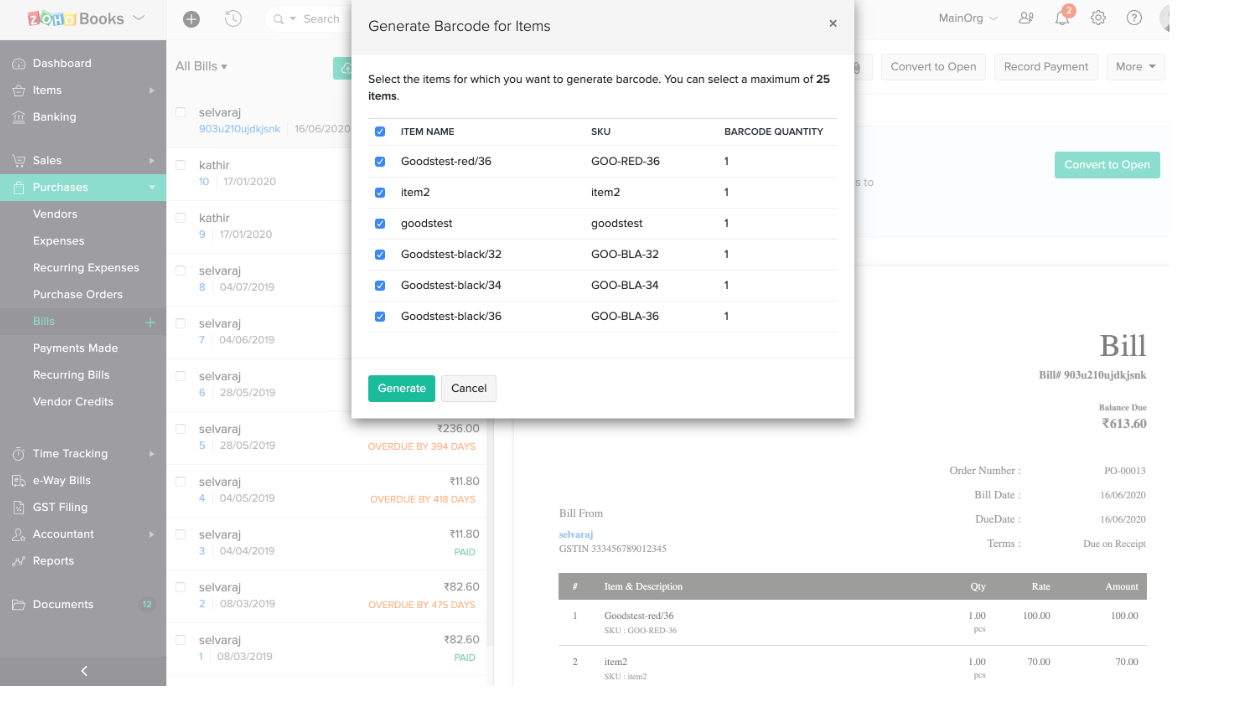
Deskera — Overview
Cloud software for managing production and warehouse operations. It is also helpful for accounting and HR management. Moreover, Deskera provides CRM and has integrations with 2,000+ applications.
| Pros | Cons |
✅ Comprehensive barcode generation, autogeneration, and import capabilities |
❌ Expensive — from $1,000 a month |
✅ Supports a wide range of barcode types, including 1D and 2D formats |
❌ May have a steeper learning curve for users unfamiliar with comprehensive ERP systems |
✅ Integrated label editor for customizing barcode labels |
|
✅ Real-time inventory tracking with batch and serial number management |
|
✅ Cloud-based platform with mobile accessibility for on-the-go management |
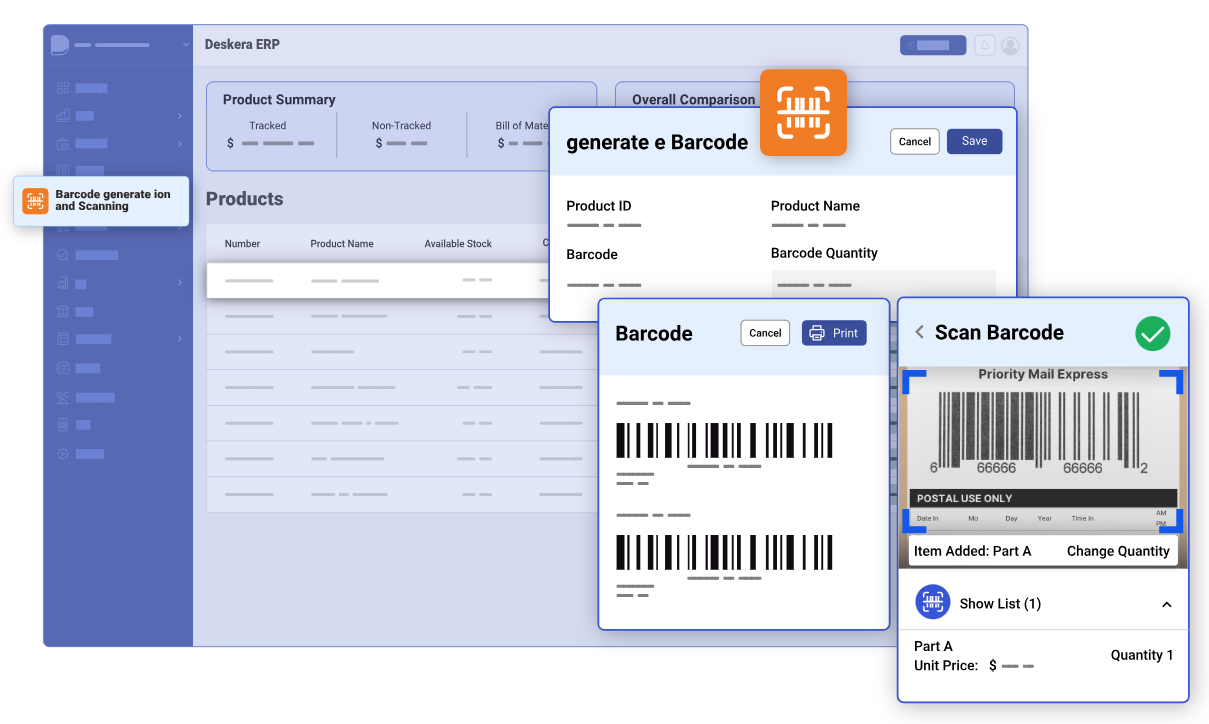
Katana — Overview
Cloud manufacturing software helps control production, inventory, and accounting. Enable fast and error-proof barcode tracking. Supports integrations with CRM, e-commerce, reports, and other tools. Provides API for custom integrations.
| Pros | Cons |
✅ Real-time inventory tracking with barcode integration |
❌ Expensive — from $360 a month (barcode scanning is available starting from Standard plan) |
✅ Supports batch tracking and serial number management |
❌ Isn’t suitable for wholesalers and distributors |
✅ Seamless integration with e-commerce and accounting platforms |
❌ No assets tracking |
✅ User-friendly interface suitable for SMBs |
❌ Mandatory onboarding fees for Standard and higher plans |
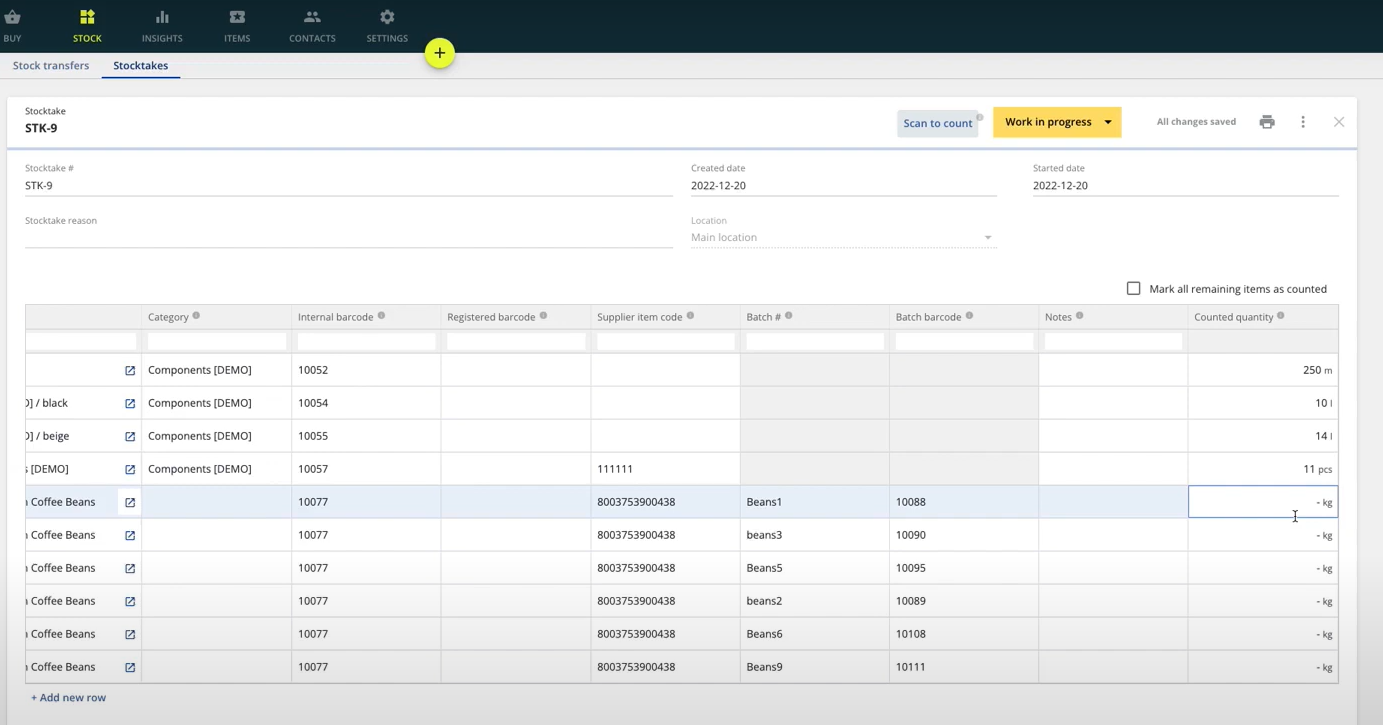
📋 Barcode + Receiving = Your Ultimate Warehousing Combo
Don’t stop at choosing the right barcode software — streamline your warehouse processes too. 📝 Use our free receiving checklist to guide warehouse staff through goods inspection, bin placement, and more. No overcomplication. Just results.
📩 Fill in the form to get the checklist + 30‑day trial promo code
inFlow — Overview
Inventory software for managing stock and orders. Helps pick, pack, and ship orders from any device. The main focus is on the label editor.
One of the core features is working with B2B customers — inFlow can take online orders from them. Also, inFlow offers useful tools for manufacturers.
| Pros | Cons |
✅ Comprehensive barcode and inventory management features |
❌ Expensive — from $149 a month (serial numbers are extra-chargeable) |
✅ Supports a wide range of barcode types, including QR codes |
❌ Onboarding — required one-time cost, starts at $499 |
✅ User-friendly interface suitable for SMBs |
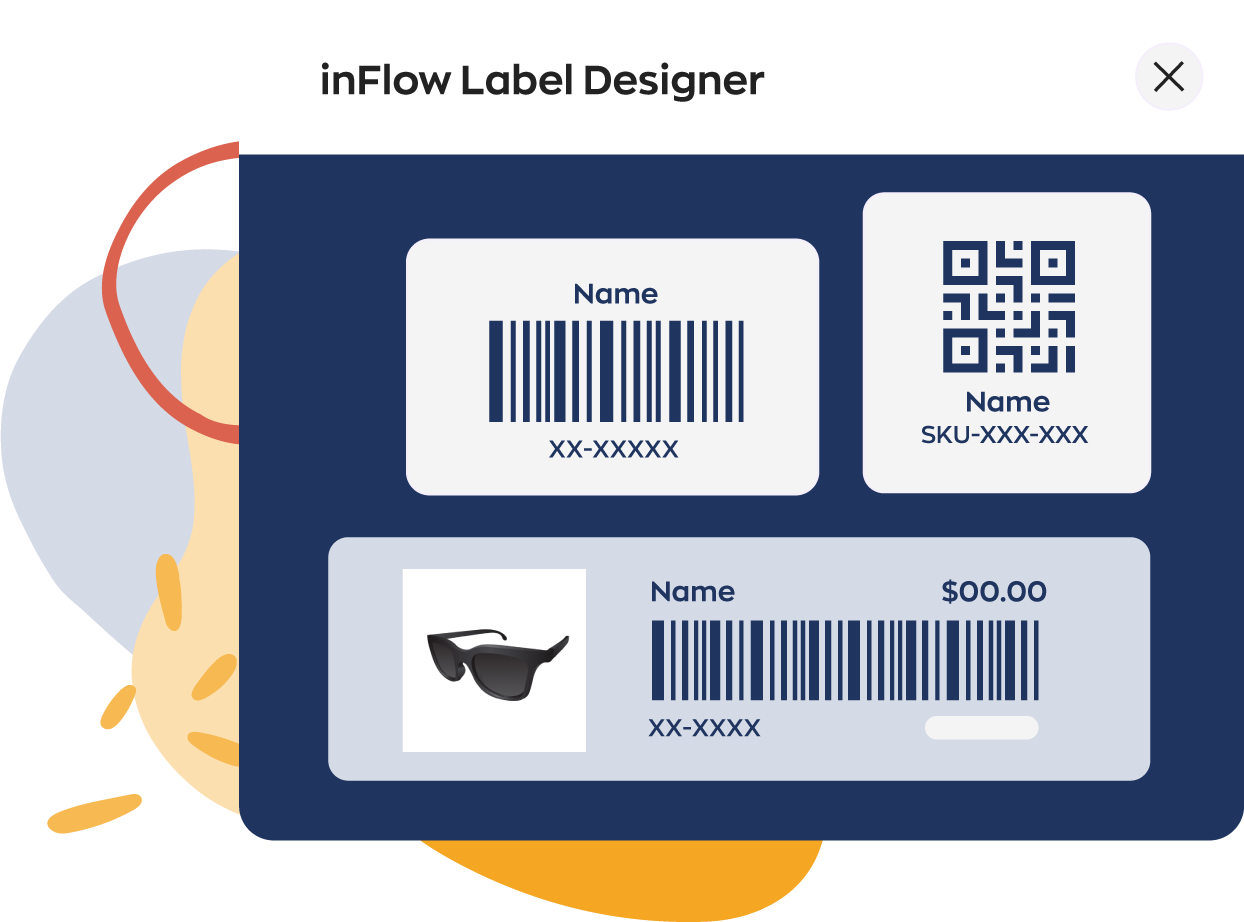
Sortly — Overview
Inventory management tool with a user-friendly interface. Barcoding helps track goods in stock, items in and out, supplies, and raw materials. It connects scanned goods to main info such as SKU, quantity, price, and location.
Moreover, Sortly offers custom solutions for various industries & API for integrations.
| Pros | Cons |
✅ Affordable — from $24 a month |
❌ Limited support for complex bundle and batch tracking |
✅ User-friendly interface suitable for non-technical users |
❌ 3rd-party scanner support & barcode label creation are available starting from Ultra plan — from $74 a month |
✅ Comprehensive barcode and QR code generation and scanning capabilities |
❌ Advanced features like API access and integrations are available only in higher-tier plans |
✅ Customizable labels and fields to fit various inventory needs |
❌ May not be suitable for large enterprises with complex inventory management needs |
✅ Mobile app available for iOS and Android devices |
|
✅ Supports asset tracking and inventory management across multiple locations |
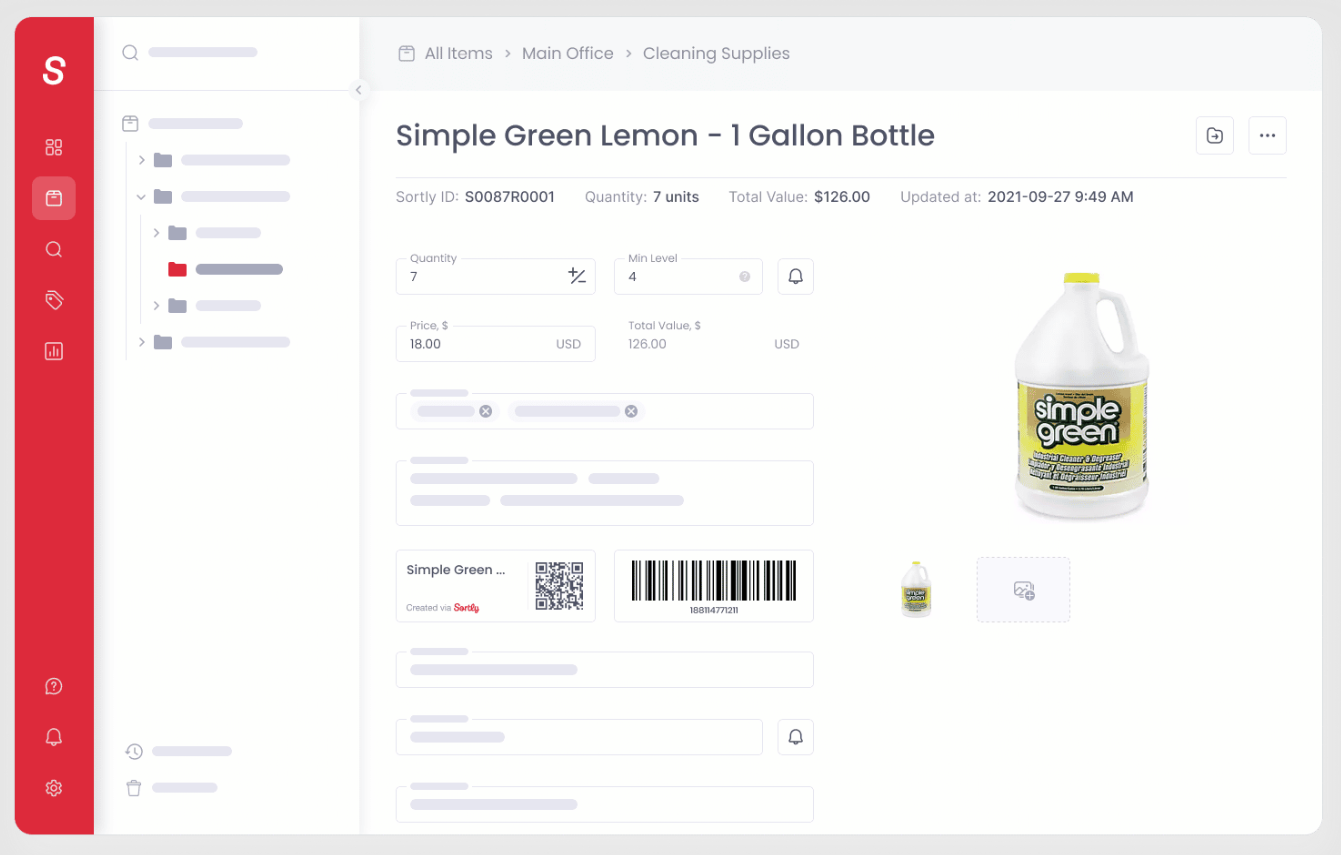
EZOffice — Overview
Asset-driven management software. One of the company products — EZOfficeInventory — enables entrepreneurs to process business operations, manage a team, and track equipment. Scan-based audits and stock reports are available too.
| Pros | Cons |
✅ Comprehensive asset tracking with barcode and QR code support |
❌ Expensive — from $35 a month (mind that bundles and packaging are available starting from Advanced plan which is more pricey) |
✅ Mobile app enables on-the-go scanning and asset management |
❌ Base plans support tracking up to 250 items; additional items require higher-tier plans or additional fees |
✅ Customizable labels and templates for asset identification |
❌ Initial setup can be time-consuming and may require a learning curve |
✅ Integration with third-party applications like Zendesk and Dropbox |
❌ Some users report that the mobile app can be less intuitive and may lack certain features compared to the desktop version. Some users report a learning curve with advanced features. |
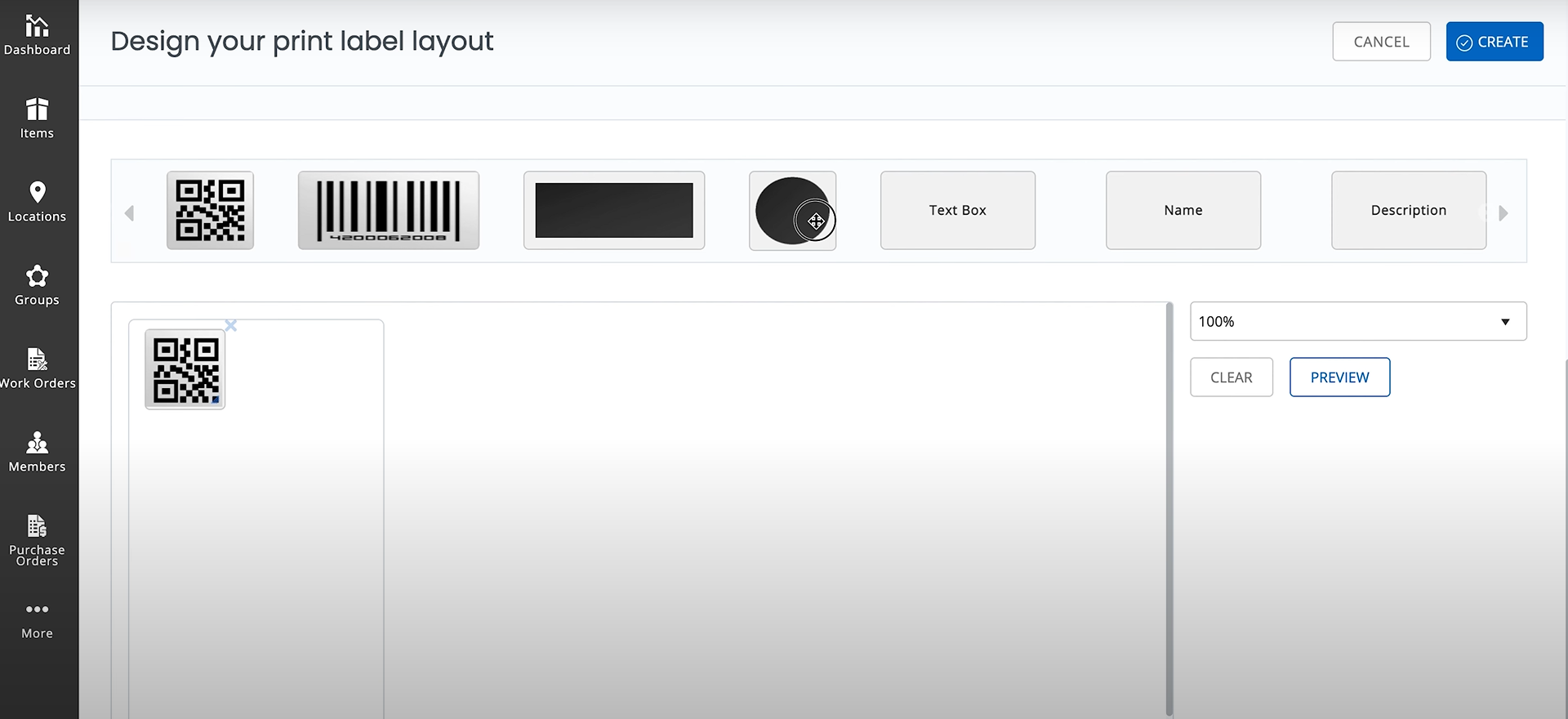
Mintsoft — Overview
Order fulfillment software for online retailers, warehouses, and third-party logistics companies. Helps one’s employees to pick, pack and manage stock with ease. Provides 150+ integrations.
| Pros | Cons |
✅ Comprehensive barcode support, including generation, scanning, and label printing |
❌ Expensive — from $211 a month (Mobile Barcode Scanning App: $33/month per user license) |
✅ Mobile app enables on-the-go inventory management across multiple locations |
❌ Limited compatibility with non-Android devices for the mobile app |
✅ Customizable label templates for efficient inventory identification |
❌ Some users find the interface dated compared to modern cloud-based solutions |
❌ Full functionality dependent on integration with third-party accounting systems |
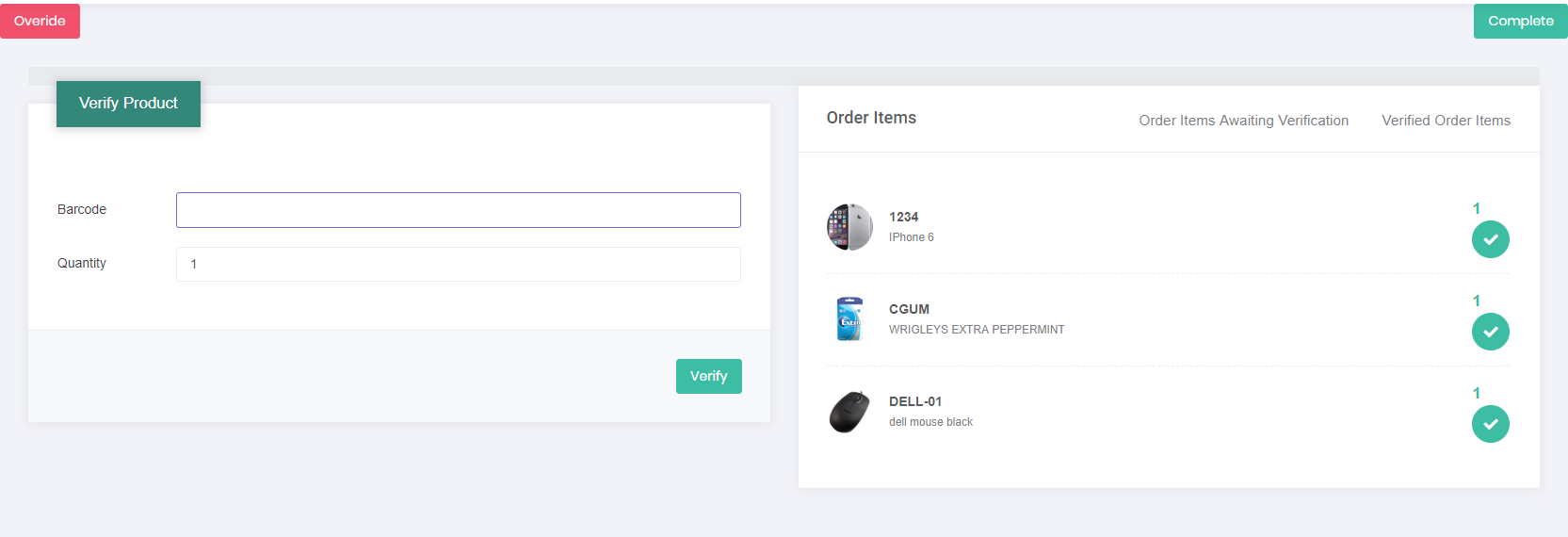
TranZact — Overview
Software designed for production management. Targeted at SME. Offers integration with Tally & Excel.
| Pros | Cons |
✅ Comprehensive barcode generation, autogeneration, and import capabilities |
❌ Expensive — from $60 a month |
✅ Supports batch and serial number tracking, beneficial for manufacturing processes |
❌ Isn’t suitable for large-scale businesses |
✅ User-friendly label editor for customizing barcode labels |
❌ Isn’t initially designed for wholesalers or distributors |
✅ Cloud-based platform with mobile accessibility, facilitating real-time inventory management |
❌ Lacks asset tracking features, which may be essential for businesses needing to monitor equipment or fixed assets |
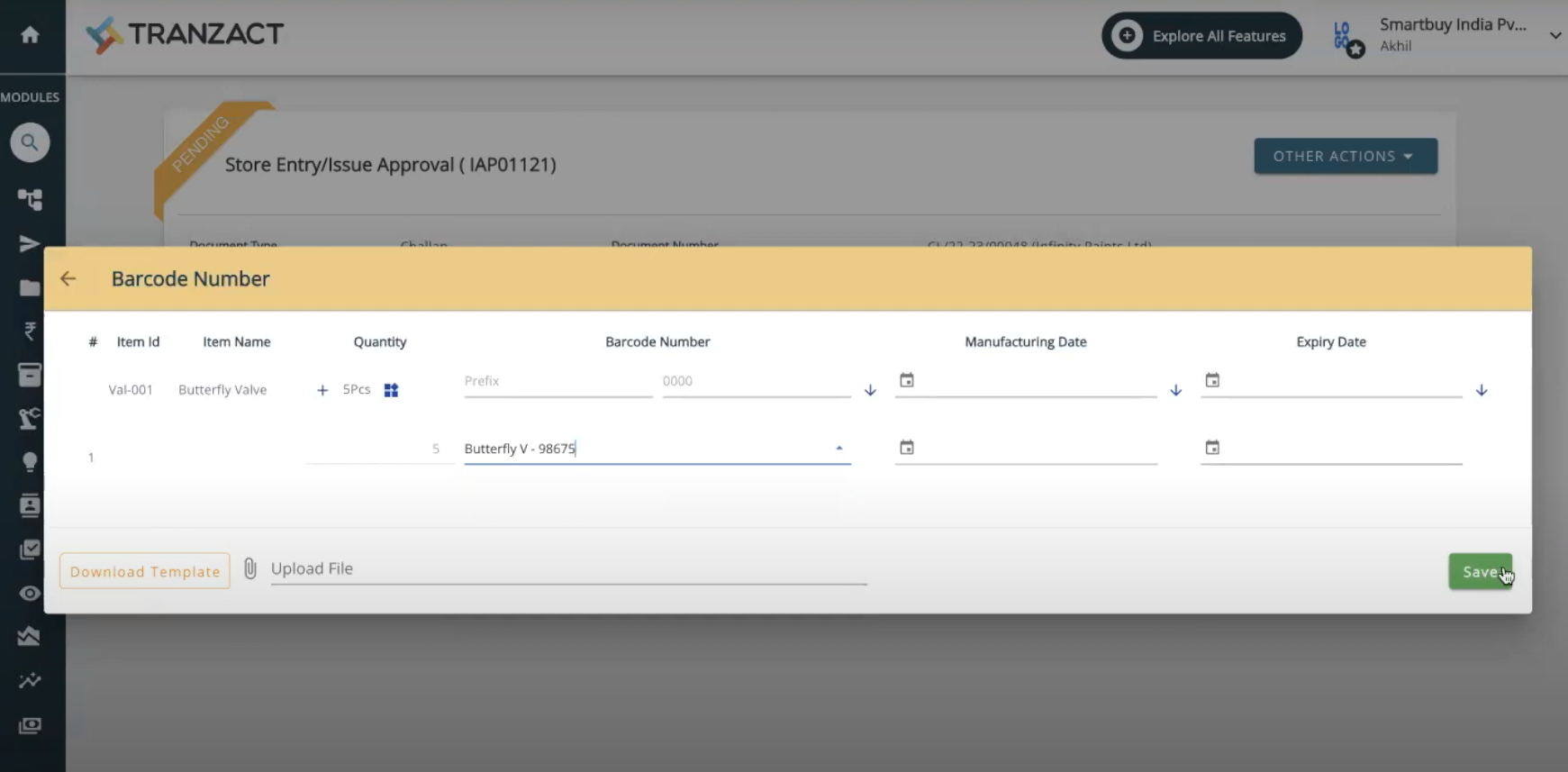
HandiFox — Overview
Inventory tracking & sales management software for small and medium businesses. Barcodes in HandiFox can be used for sales orders and invoices, and to pick and pack ordered items. The software provides tools for manufacturing and accounting.
| Pros | Cons |
✅ Comprehensive barcode support, including generation, scanning, and label printing |
❌ Expensive — from $39 a month (serial numbers are available starting from Pro Plan which is quite pricey) |
✅ Mobile app enables on-the-go inventory management across multiple locations |
❌ Full functionality requires integration with QuickBooks Online |
✅ On-premise solution available |
❌ Device compatibility: Optimal performance with MFI-certified barcode scanners; some third-party scanners may have limited compatibility |
✅ Customizable label templates for efficient inventory identification |
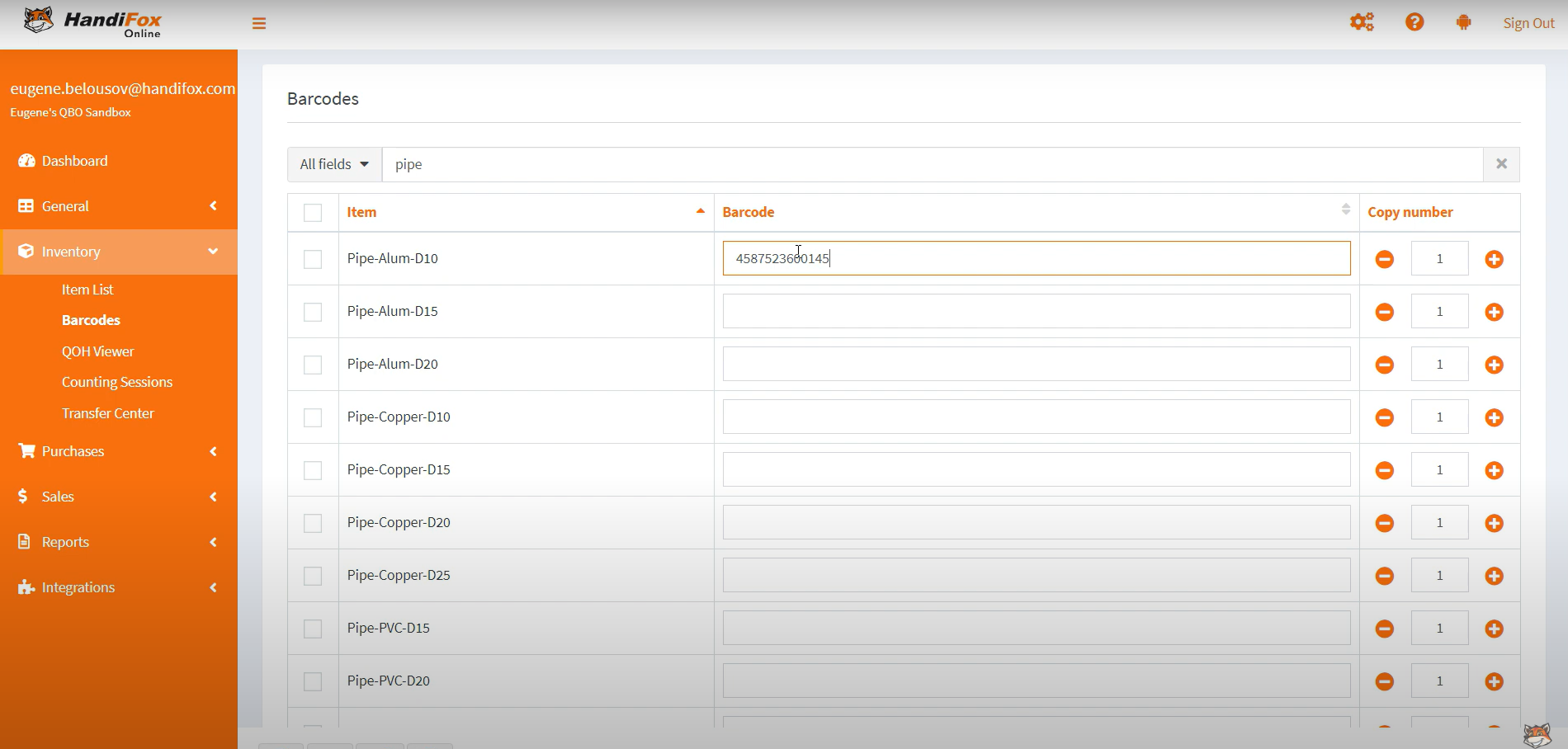
Vyapar — Overview
Billing & inventory management software with a barcode scanning solution helps to avoid long queues of customers at billing counters and keep accurate stock. Accounting and GST invoicing are big advantages of Vyapar.
| Pros | Cons |
✅ Affordable — from $7 a month (a few free features are available for the Android app only) |
❌ Limited advanced features compared to enterprise-level solutions |
✅ Comprehensive barcode generation and scanning capabilities |
❌ Customer support may be limited to email and phone; no live chat support |
✅ Supports batch and serial number tracking |
❌ Some users may find the interface less intuitive compared to competitors |
✅ Offers both desktop and mobile applications |
|
✅ Provides customizable label printing options |
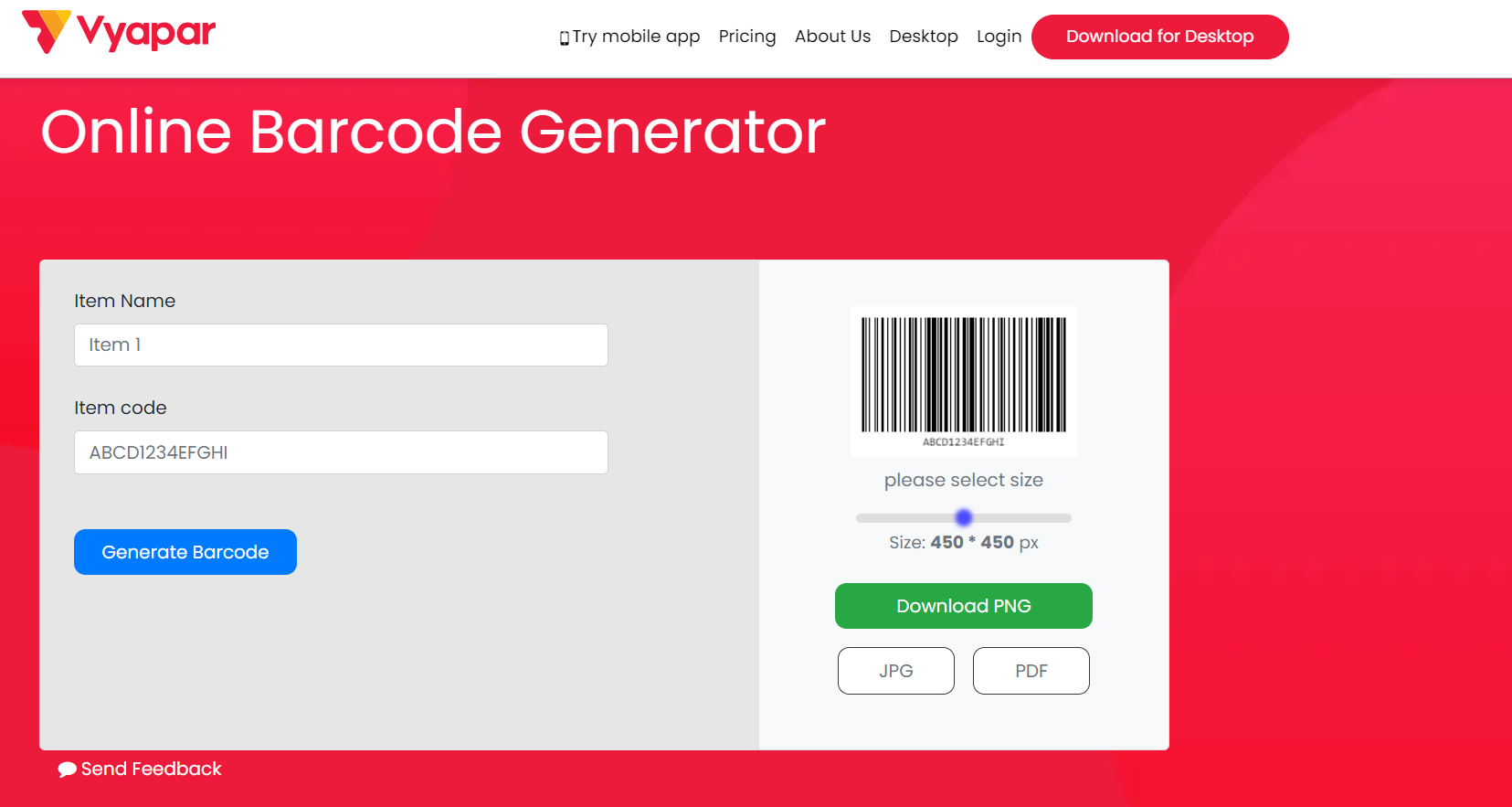
Salesbinder — Overview
Inventory software system for any company purchasing and selling products. Helps generate and scan barcodes to deal with sales & purchase orders, and invoices.
| Pros | Cons |
✅ Affordable — from $9 a month (barcoding is available on Free plan) |
❌ Lacks a dedicated label editor for barcode labels |
✅ Supports a wide range of barcode types |
❌ Does not support asset tracking functionalities |
✅ Offers kitting and bundling features for inventory management |
❌ Lacks autogeneration of barcodes |
✅ Easy-to-use interface with quick setup |
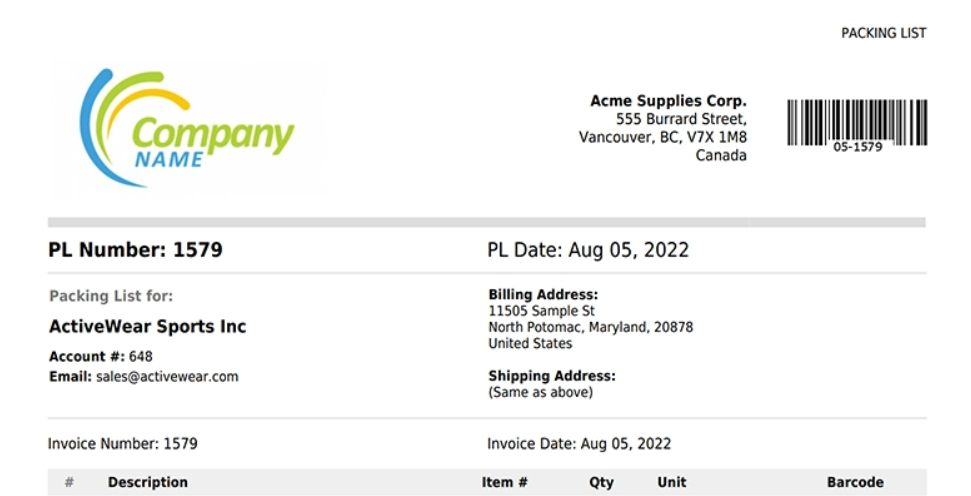
How to Choose the Right Barcode Inventory System for Your Business
Choosing the right barcode inventory system depends on your business size, goals, budget, and operational complexity. Whether you’re a manufacturer, wholesaler, or retailer, here’s what to consider before investing in an inventory management software with barcode scanner support.
🎯 Define Your Goals
What do you want to achieve with barcoding? Do you need it for faster inventory counting, loss prevention, error reduction, or to improve manufacturing and order accuracy? A clear goal helps you prioritize features and avoid overpaying for unnecessary functionality.
🧩 Match Features to Tasks
Once you’ve identified your goals, outline specific workflows:
- Do you only need barcode generation and scanning, or also autogeneration, custom thermal label printing, and serial number tracking?
- Basic tasks might be covered by simple tools, but if you’re managing variants, batches, or raw materials, you’ll need a full-featured barcode inventory software.
💰 Budget Considerations
Hardware costs are unavoidable. Expect:
- Hand-held barcode scanner: $25–120
- Stationary scanner: $120+
- Thermal printer: $120–250
- Thermal paper: ~$0.50 per roll
Software prices vary:
- Entry-level barcode inventory systems start at $7–10/month
- Mid-range tools: $40–120/month
- Enterprise-level ERP systems with barcode support: $500–1,000/month
Annual plans typically offer better value than monthly subscriptions.
☁️ Cloud vs. On-Premise
Cloud-based barcode inventory systems offer mobility, automatic backups, and real-time access. On-premise solutions can be suitable for businesses with strict data policies or offline needs, but require IT resources and manual updates.
🔌 Integration Capabilities
Your barcode system should integrate with purchase orders, sales workflows, and inventory control software. This reduces duplication and keeps your data accurate across departments.
📱 Mobile Scanning and Usability
Look for systems that support barcode scanning via mobile apps — ideal for warehouse teams and businesses with remote or multi-location operations. Ensure the platform is intuitive enough for quick onboarding.
How to Implement a Barcode Inventory System in Your Business
Implementing a barcode inventory system helps streamline operations, reduce human errors, and improve inventory visibility. Follow these steps to set it up effectively.
Step 1: Choose the Right Barcode Type
Start by identifying what types of barcodes your business needs — for example, 1D (EAN-13, Code-128) or 2D (QR codes, Data Matrix). This decision depends on what you plan to track: finished goods, raw materials, product variants, packaging, or storage locations. Consider what data should be encoded: price, currency, SKU, size, production or expiry date, logo, etc.
Step 2: Select Barcode Software and Hardware
Based on your budget and operational needs, choose the right combination of:
- Barcode inventory software (free tools, mid-range platforms, or ERP systems)
- Hardware (hand-held scanners, thermal printers, labels)
Ensure the software supports barcode generation, printing, scanning, and integrations with your inventory or ERP system.
Step 3: Prepare Your Setup Plan
Create an implementation roadmap:
- Define who does what and by when
- If using hardware only, generate barcodes manually and track them in Excel
- If using software, import items, generate or autogenerate barcodes, and configure settings
- Customize and print thermal labels, price tags, and barcode-enabled documents
Step 4: Train Your Staff
Once the system is configured and tested, train your employees to scan barcodes, manage inventory, and update the system correctly. Use demos, manuals, or short internal tutorials.
Step 5: Monitor and Optimize
After the initial rollout, track performance and gather feedback:
- Are you saving time and reducing errors?
- Are your barcodes readable and accurate?
- Is additional functionality needed?
Conduct periodic reviews to keep your barcode inventory software aligned with your growing business needs.
A Brief History of Barcoding
Barcoding began in 1948 when two American students invented a system to improve supermarket inventory. Inspired by Morse code, they initially drew concentric circles in the sand — a concept that evolved into the modern barcode.
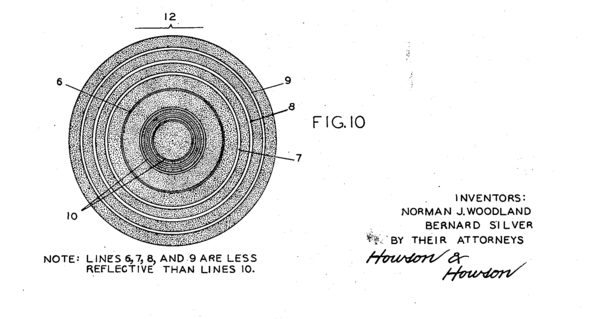
In 1961, American railroads adopted linear barcodes to track freight cars. By 1973, the Committee on Uniform Grocery Product Code endorsed barcoding for retail, and in 1974, a pack of Wrigley’s gum became the first item scanned using a UPC code in Ohio.
Key milestones:
- 1986: Laser barcode scanners appeared
- 1999: QR codes were introduced in Japan
- 2005: Airlines adopted barcode boarding passes
Barcoding has since become the backbone of global logistics, inventory tracking, and automated retail systems.
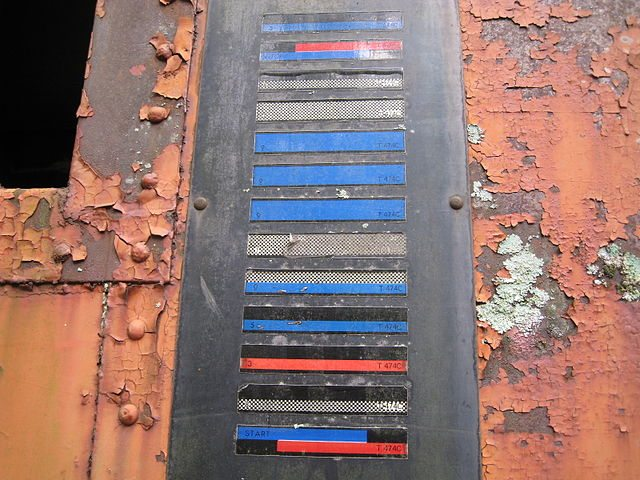
Frequently Asked Questions on Barcode Inventory Systems
Let’s address the most frequently asked questions about using a barcode inventory system to manage and track your stock effectively.
What is a barcode?
A barcode is a visual, machine-readable code that represents product data using lines, spaces, or patterns like QR codes. When scanned, it reveals information such as the product name, size, price, or manufacturer. Barcodes are essential components of any barcode inventory software.
How do you track inventory with a barcode?
To track inventory, assign a unique barcode to each SKU or product. When a barcode is scanned — during receiving, transfers, or sales — the system automatically updates the item’s status in your inventory management software with barcode scanner support. This enables real-time tracking of quantities and locations.
Can I use my phone as a barcode scanner?
Yes. Many modern barcode inventory systems offer mobile apps that allow you to scan barcodes using your smartphone’s camera. This is a cost-effective solution for small businesses without dedicated scanners.
How do I create a barcode for my inventory?
You can generate barcodes using barcode inventory tools or inventory management software that includes barcode generation features. Choose the right format (e.g., UPC, EAN, QR), assign each barcode to an item in your system, and print labels using a thermal printer.
What is the best barcode for inventory management?
For retail and general inventory use, UPC and EAN barcodes are most common. If you need to store more data — like batch numbers or expiration dates — 2D barcodes such as QR codes or Data Matrix might be better. Choose based on your product type and data needs.
What is a barcode inventory system?
A barcode inventory system is a combination of software and hardware used to track inventory through barcodes. It enables businesses to monitor stock movements from receiving to dispatch using scanners and barcode labels, reducing manual entry and human error.
What is the best barcode software for inventory?
The best barcode inventory software depends on your business size, budget, and features needed. Some of the top-rated solutions include Kladana, Zoho Inventory, inFlow, and EZOfficeInventory. See our comparison table of top barcode inventory software for detailed feature breakdowns.
Is barcode inventory software expensive?
Not necessarily. Many barcode inventory systems offer affordable plans starting at $7–10/month, and some provide free trials. Total cost may include barcode scanners and label printers, but ROI is usually quick thanks to time saved and fewer errors.
Can I get free barcode inventory software?
Yes. There are free plans and tools available that allow basic barcode generation, scanning, and inventory tracking. These are ideal for startups or businesses just beginning to automate their inventory.
How to implement a barcode system for inventory?
To implement a barcode inventory system:
- Choose a barcode format and inventory software;
- Generate barcodes and print labels;
- Import your item data into the software;
- Train your staff on scanning and system usage;
- Begin barcode-based tracking in daily workflows;
- Regularly review and optimize your setup.
What are the best practices for barcode inventory systems?
- Label every item and location clearly with scannable barcodes
- Use high-quality printers and labels
- Keep your inventory database up to date
- Train employees on proper scanning procedures
- Conduct cycle counts to verify inventory accuracy
- Leverage barcode data for forecasting and analytics
What is the future of barcode inventory systems?
The future includes integration with RFID, AI, and machine learning to enable predictive inventory planning. Mobile apps and cloud-based systems are becoming the norm, making inventory management with barcode scanning even more accessible for SMEs.
Read‑alikes
How Barcode Tracking Systems Transform Business Operations
Barcoding for Manufacturing: Importance, 8 Paramount Benefits, and Step‑by‑Step Implementation Guide
Revolutionizing WMS Efficiency: Smart Warehouse Barcoding
Free Inventory Management Software: Top 20 Solutions for Small Businesses
Inventory Management Guide for Beginners: Techniques, Challenges, Best Practices, and Trends
Inventory Counting: Step‑by‑Step Guide on How to Conduct and Access the Results
Inventory Management in Excel: Free Template and a Step‑by‑Step Guide
